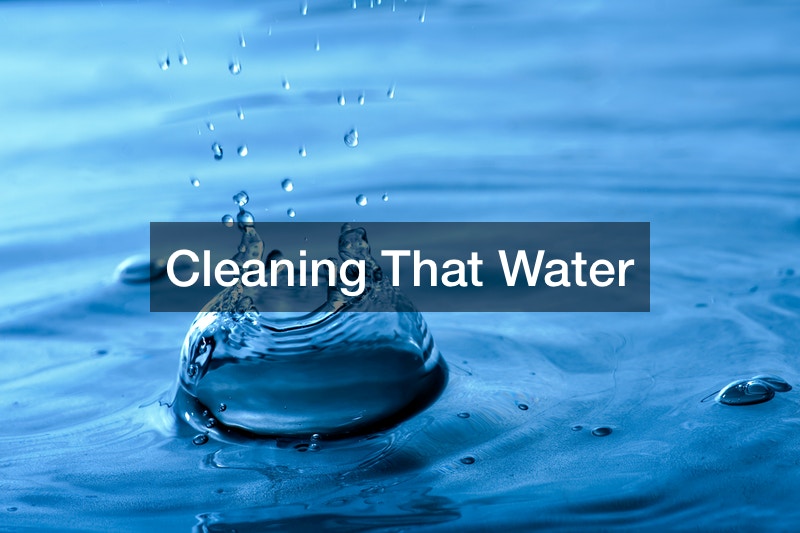
Commercial water treatment companies near me are used across the globe for different reasons. Some of the most popular ones are for commercial or industrial purposes. These large companies can afford to spend a lot of money on the maintenance and upkeep of their water treatment systems. For smaller companies, on-site treatment systems might be cost-prohibitive. However, they still have to take care of their residential properties’ water needs.
A reputable water treatment company should offer complete programmable domestic water treatment solutions designed for residential use. They provide clients with components of a water treatment plant that can be maintained by anyone who has basic plumbing skills without any issues at all. They also offer more advanced versions for large commercial properties or industrial applications.
Complete water treatment plants use a combination of physical and chemical processes to remove pollutants and contaminants from the water. The process will depend on components of water treatment plant and what type of pollutant is in the water. Water treatment processes include sedimentation, filtration, chlorination, ozonation, fluoridation, and others.
How do they clean water? Water treatment plants come in different forms and serve a myriad of purposes. These complexes can be found anywhere in the world, but their components remain pretty much the same. They are used to clean water from various sources such as storm drains, rivers, lakes, streams, or even from the ocean. They are also used to make sure that the water is safe for consumption and use in any number of industries, such as agriculture, mining, or industry.
Clean water is vital in any society today, for everything from drinking and cooking to laundry, showering and bathing, and many industrial uses as well. Clean water is derived from water tables and aquifers, but natural bodies of water are often polluted with coal ash, toxic waste, and other harmful materials. Fortunately, sewage and other dirty water can be reclaimed, and clean water is extracted for use. Coal ash wastewater or sewage is routinely reclaimed like this, and a commercial treatment plant will get the work done. Now, how exactly do water treatment companies get the job done? How are we getting our clean water?
Current Water Sources
For reference, only 3% of the Earth’s water is fresh, or salt-free, so that clean water must be treated carefully. Ground water today accounts for 95% of the U.S.’s available fresh water, and it provides clean drinking water for about half of all Americans. However, many sources of pollution may make this water unusable until it is treated. It is believed that just over 80% of the most serious hazardous waste sites across the United States have harmed the quality of nearby ground water, and some 16,000 chemical spills happen each year from trucks, trans, and storage tanks whenever harmful materials are being transferred. It is also believed that 70% of all industrial waste is dumped right into bodies of water, and pollute the usable water supply there. All of this is why water treatment plants are hard at work across the United States today.
Cleaning That Water

Primary and secondary waste treatment methods are able to remove 85-95% of all pollutants found in water before that treated wastewater is disinfected and then charged into local waterways. And there is more than one way to clean up water that’s dirty with coal ash or industrial waste.
One such method is known as coagulation, and it is done when liquid aluminum sulfate or alum is added to the water, and this mixture will then cause dirt particles to coagulate and stick together (hence the method’s name). Such dirt particles clump together into larger masses known as flocs, and then these flocs can be easily removed from the water with filtration or settling.
Meanwhile, there is also the sedimentation method, which builds upon the coagulation step of water treatment method. Water will go into sedimentation basins, and there, the water moves slowly and thus the floc particles settle right to the bottom. As the floc accumulates down there, it forms sludge, and that sludge is carried on to drying lagoons. And of course, water treatment typically includes filtration as well, where sand and gravel (and sometimes crushed anthracite) and this removes impurities that float on the water’s surface. This also makes disinfectants more effective.
The water is getting cleaner than ever, but there are steps left to go before it can be put into the general water supply. Now, it is time to address the bacteria, viruses, and micro-parasites in the water, and disinfectant chemicals (and chlorine) can effectively kill off such entities inside the water. It may be added that fluoride can be added to the water until the water’s level reaches the standard level, and this is done to help protect the dental health of anyone who drinks that water. Fluoride is a healthy and essential element for the teeth, after all. Finally,the water’s pH level may be adjusted when lime is added, and this stabilizes naturally soft water and can help minimize corrosion as the water enters the general utilities.
Some water treatment plants will gather sludge and similar materials and put it onto screens and conveyor belts, and use pressurized mesh to simply squeeze the water right out while keeping the sludge together. The leftover, water-free sludge is dry and hard, and disposed of as solid cakes while the extracted water can be further treated elsewhere.
